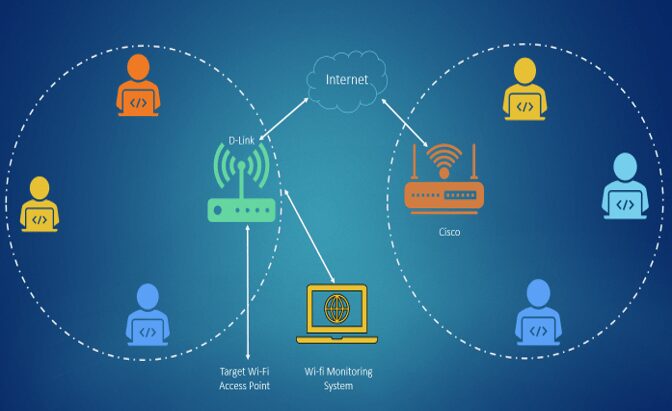In the world of modern intelligence operations, communication intelligence (COMINT) plays a vital role in gathering critical information. COMINT, a subset of signals intelligence (SIGINT), focuses on intercepting and analyzing communication signals from various sources.
These systems have become indispensable tools in military, law enforcement, and counterterrorism efforts. Understanding how COMINT systems work and their significance in contemporary intelligence can provide insights into their broader impact on global security.
An Overview

Source:pinterest.com
COMINT systems are designed to intercept and process communication signals such as voice, data, and text transmissions. These systems can monitor communication channels like radios, phones, and even encrypted communication platforms. By analyzing these signals, intelligence agencies can gain valuable information about potential threats, monitor enemy activities, and stay ahead of emerging dangers.
Unlike ELINT (Electronic Intelligence), which focuses on non-communication signals like radar, COMINT targets communication-specific data. The information gathered can be used to build profiles, map out networks, and even prevent attacks by intercepting critical plans before they can be executed.
Key Components
COMINT systems operate through a series of highly specialized components. These components are crucial for the accurate detection, interception, and processing of communication signals:
- Signal Interception: The first step in any COMINT operation involves intercepting signals. This is typically done using highly sensitive antennas and receivers capable of capturing signals from a wide range of frequencies.
- Signal Processing: Once intercepted, the signals are processed using advanced algorithms and filtering systems. This step involves isolating relevant communication data from the noise.
- Decoding and Analysis: After processing, the signals are decoded and analyzed to extract meaningful intelligence. COMINT systems can identify languages, detect patterns, and reveal hidden communication channels.
- Data Integration and Reporting: The extracted data is then integrated with existing intelligence databases, allowing analysts to correlate information and produce actionable reports.
Applications in Military Operations
COMINT systems have a wide range of applications in military operations. One of their primary roles is in battlefield intelligence, where real-time communication monitoring can provide insights into enemy movements and strategies. Military forces can intercept enemy communication, identify command structures, and predict attack plans, enabling them to make informed decisions.
This is also vital in electronic warfare. By disrupting or manipulating enemy communication channels, military forces can gain a tactical advantage. Deception operations, where false information is fed to the enemy, are another aspect where COMINT plays a significant role.
Additionally, these systems are essential in monitoring insurgent groups and terrorist networks. In counterterrorism operations, COMINT helps identify communication patterns among cells, track their locations, and uncover plans before they can be executed. The success of many counterterrorism missions can be attributed to the effectiveness of COMINT systems in gathering and analyzing crucial communication data.
Law Enforcement and National Security
Beyond the battlefield, COMINT systems are increasingly used by law enforcement agencies and national security bodies. The fight against organized crime, drug trafficking, and other criminal activities often relies on intercepting communications between criminal networks. By monitoring communications, law enforcement agencies can track criminal organizations, map out their networks, and dismantle operations.
In national security, COMINT is employed in monitoring potential internal and external threats. Border security, counterintelligence, and cyber defense operations all benefit from the ability to intercept and analyze communication signals. As communication channels evolve with advancing technology, so too do COMINT systems, allowing security agencies to keep pace with new methods of communication used by adversaries.
Technological Advancements in Systems

Source:facebook.com
The effectiveness of COMINT systems has been greatly enhanced by recent technological advancements. Modern systems are now equipped with artificial intelligence (AI) and machine learning capabilities, enabling more accurate signal processing and analysis. AI-driven COMINT systems can automatically detect patterns, identify anomalies, and provide real-time insights.
Additionally, improvements in signal processing technology have increased the range and sensitivity of COMINT systems. This allows for the interception of even low-power and encrypted communications. Advanced encryption-breaking techniques are also integrated into modern systems, providing deeper access to secure communications.
Another significant advancement is in the miniaturization and mobility of COMINT systems. Portable and mobile units are now being deployed in the field, allowing for on-the-ground interception and analysis in real time. This is particularly useful in both urban and remote environments, where rapid intelligence gathering is critical.
Ethical Considerations and Challenges
While COMINT systems provide undeniable benefits in intelligence operations, they also raise important ethical considerations. The interception of communications, especially those involving civilians, can lead to privacy violations. Intelligence agencies must navigate a fine line between ensuring national security and respecting individual rights.
Moreover, the use of these systems in global espionage activities can strain international relations. Countries have been caught using COMINT systems to spy on allies, leading to diplomatic tensions. The development and deployment of COMINT technologies are therefore often subject to strict regulatory frameworks to prevent abuse.
There are also technical challenges associated with COMINT operations. As communication technologies become more sophisticated, intercepting and decrypting signals becomes increasingly complex. The growing use of encrypted messaging apps, satellite communication, and frequency-hopping technologies requires constant innovation in COMINT systems to remain effective.
The Future in Intelligence Operations

Source: builtin.com
The future of COMINT systems will likely be shaped by continued advancements in AI and machine learning. These technologies will make it easier to process large volumes of intercepted data quickly and accurately. Predictive analytics will play a bigger role, enabling intelligence agencies to anticipate threats before they fully emerge.
As communication technologies evolve, these systems will need to adapt to new platforms, including those driven by quantum computing and blockchain. The integration of COMINT with other forms of intelligence, such as ELINT and cyber intelligence, will provide a more holistic approach to modern intelligence operations.
Increased collaboration between intelligence agencies across borders will also drive innovation. Joint efforts in developing and deploying COMINT systems can lead to more effective global security measures and counter threats that transcend national boundaries.
Conclusion
COMINT systems have become a cornerstone of modern intelligence operations. Their ability to intercept, process, and analyze communication signals provides invaluable insights into a wide range of activities, from military operations to national security and law enforcement.






